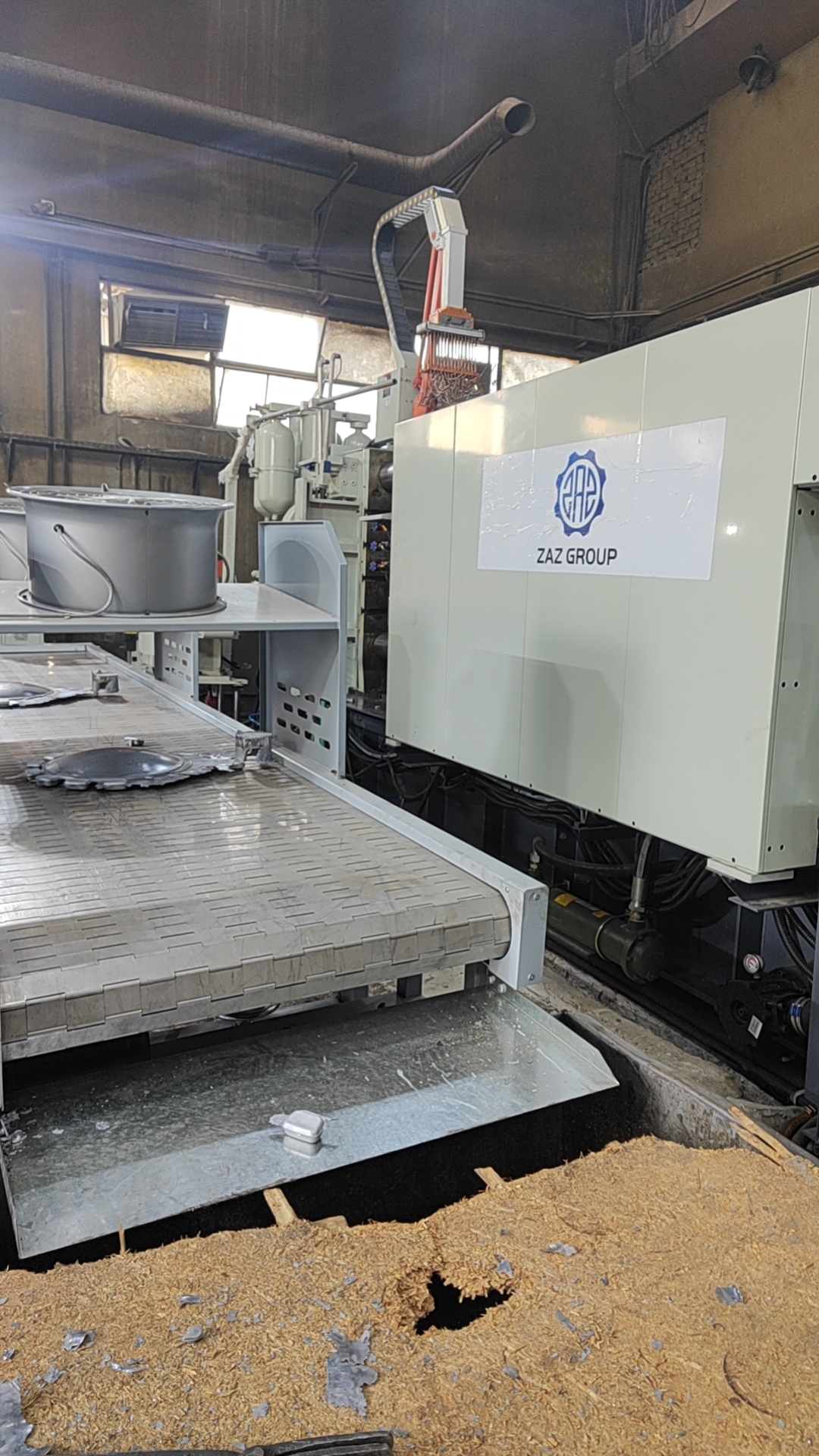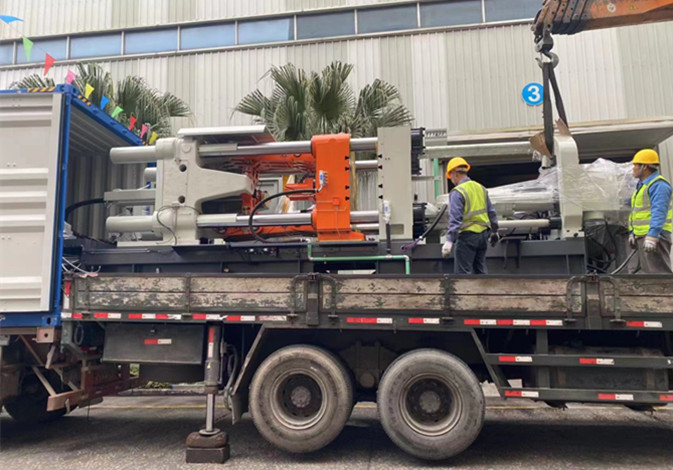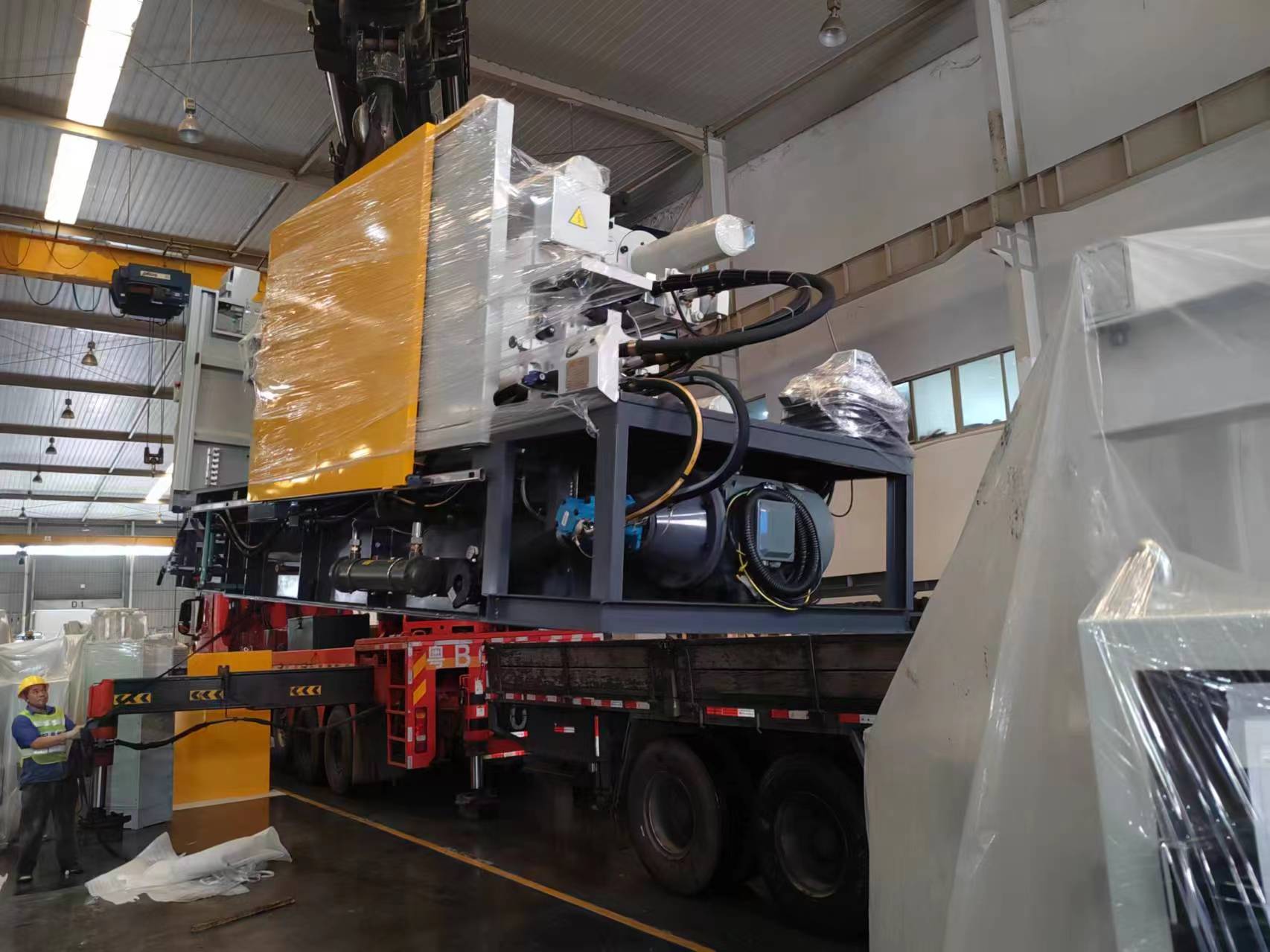a413
LK Die Casting Machine / 2024-09-20 09:24:21
2024-09-20 by Cherry
In the foundry industry, the relationship between A413
aluminum alloy and die-casting machine is close and important.
A413 alloy is widely used in die-casting process due to its
excellent mechanical properties and good casting characteristics,
and the die-casting machine is the core equipment to realize
this process.

Characteristics of A413 aluminum alloy
A413 aluminum alloy is a high aluminum alloy, an aluminum-based
alloy material, the main components of aluminum, silicon,
and a small amount of copper, magnesium, and other elements.
It has many unique properties. This alloy contains
a high proportion of silicon, which gives it good casting
performance. It has excellent fluidity and can easily fill
every corner of the mold cavity during the die-casting process.

It can quickly reach every position along the path set by
the mold. This good fluidity is due to the careful ratio
of its chemical composition, and this feature also makes
it a commonly used material in the die-casting process.
Its main characteristics include:
1. Good fluidity: A413 alloy has excellent fluidity, can
fill complex mold structures, and effectively reduces the
occurrence of casting defects.
2. Excellent mechanical properties: In the cast state, A413
aluminum alloy exhibits good strength and toughness and
is suitable for making high-strength castings.
3. Corrosion resistance: The alloy has strong corrosion
resistance and is suitable for applications in a variety
of environments, extending the service life of the
product.
4. Good surface treatment performance: A413 alloy is easy to
surface treat and can meet the aesthetic and functional
requirements of different customers.
Working principle of die-casting machine
Die-casting machine is a device that injects molten metal
into a mold and forms a casting after cooling and
solidification. Its working principle is roughly divided
into the following steps:
1. Melting metal: Aluminum alloy (such as A413) is melted
into liquid through a heating furnace.
2. Injection into the mold: Molten metal is injected under
high pressure to ensure that the alloy can quickly fill
the mold cavity.
3. Cooling and solidification: In the mold, the molten metal
quickly cools and solidifies to form a casting.
4. Removing the casting: After cooling, the mold is opened
and the casting is removed.
5. Post-processing: Castings may require subsequent machining
or surface treatment to achieve the final performance and
appearance requirements.

Application of A413 aluminum alloy in die-casting
A413 aluminum alloy shows excellent performance in the
die-casting process. Here are some of its specific
applications:
1. Automotive parts: A413 alloy is widely used in the automotive
industry to manufacture engine housings, transmission
housings and other parts. Due to its lightweight and high-strength
characteristics, it can improve the fuel efficiency and
safety of automobiles.
2. Electronic product housings: In electronic products, the
heat dissipation and corrosion resistance of A413 alloy
make it an ideal material for the housings of mobile
phones, computers, and other devices.
3. Mechanical equipment components: Due to its excellent
processability and strength, A413 alloy is also commonly
used in structural parts of various mechanical equipment,
providing reliable performance.
The synergy between die casting machine and the
A413 aluminum alloy
A413 aluminum alloy and die casting machine form a good
synergistic relationship. The high-pressure injection
technology of the die-casting machine can give full play
to the advantages of A413 alloy so that it can obtain
the best fluidity and strength during the casting process.
The excellent performance of A413 alloy can improve the
production efficiency and product quality of the die-casting
machine.
1. The clamping force of the die-casting machine
It is an important parameter for A413 aluminum alloy
die-casting, the appropriate clamping force can ensure
that the mold is tightly closed during the die-casting
process to prevent the aluminum alloy liquid from overflowing.
When die-casting A413 aluminum alloy, due to its good
fluidity, if the clamping force is insufficient, defects
such as flash may occur.
Just like water in a container, if the container is not
well sealed, water will leak out. The injection system of
the die-casting machine must also match the characteristics
of A413 aluminum alloy. The injection speed should be moderate.
Too fast may cause turbulence in the aluminum alloy liquid
in the cavity, thereby entraining gas and affecting the
quality of the casting; too slow may cause the aluminum alloy
liquid to solidify prematurely during the filling process
and fail to completely fill the mold cavity.
2. In the actual production process, the temperature control
system of the die-casting machine is also closely related
to the A413 aluminum alloy
The die-casting temperature range of the A413 aluminum
alloy has certain requirements.
The die-casting machine needs to be able to accurately
control the temperature of the mold to ensure that the
aluminum alloy is die-cast at a suitable temperature.
If the mold temperature is too high, the solidification
time of the A413 aluminum alloy will be longer, and problems
such as coarse grains may occur; if the mold temperature
is too low, the fluidity of the aluminum alloy liquid will
decrease, and defects such as cold shuts will easily occur.
This requires the temperature control system of the die-casting
machine to create the best temperature environment for
the die-casting of the A413 aluminum alloy.
3. From the perspective of the mold, the mold installation
and maintenance of the die-casting machine are closely
related to the success rate of the die-casting of the A413
aluminum alloy
A413 aluminum alloy has high requirements for the surface
quality and precision of the mold during the die-casting
process. The die-casting machine needs to ensure that the
mold is installed accurately, because even a slight deviation
may cause the A413 aluminum alloy to be unevenly distributed
during die-casting, thereby affecting the dimensional accuracy
and appearance quality of the casting. Moreover, during the
long-term operation of the die-casting machine, the mold
will be worn and need timely maintenance.
For A413 aluminum alloy die-casting, the worn mold may cause
additional resistance to the aluminum alloy during the
filling process, affecting its normal flow.
4. In addition, the degree of automation of the die-casting
machine will also affect the production efficiency and
quality of A413 aluminum alloy die-casting
In modern manufacturing, automated die-casting machines
can more accurately control various parameters in the die-casting
process, such as pressure, speed, temperature, etc.
For A413 aluminum alloy, a material that has strict
requirements on die-casting parameters, automated die-casting
machines can improve production stability and product
consistency. It is like a well-trained robot that can
complete each die-casting task accurately and without error,
unlike manual operation, which may have some inevitable
errors.
5. In terms of cost, the performance of the die-casting
machine will also affect the cost of the A413 aluminum alloy
die-casting
Efficient die-casting machines can reduce scrap rates,
improve production efficiency, and thus reduce the cost of
A413 aluminum alloy die-casting.
For example, if the injection system of the die-casting
machine is unstable, increasing the scrap rate of A413
aluminum alloy die-casting, it will not only waste a lot
of aluminum alloy materials but also increases labor
costs and energy costs.
A413 aluminum alloy and die-casting machines complement
each other. The die-casting machine provides a platform
and means for die-casting of A413 aluminum alloy, while
A413 aluminum alloy is an important processing object of
the die-casting machine in the die-casting process.
Only when their respective performance parameters match
each other and work together can produce high-quality
die-casting products and meet the needs of modern
manufacturing for precision parts. Whether in the fields
of automobile manufacturing, electronic equipment or
aerospace, this close relationship between A413 aluminum
alloy and die-casting machines are constantly driving these
industries towards higher quality and higher efficiency.
In actual production, choosing the right die-casting machine
to match the aluminum alloy material can significantly
reduce production costs and improve product consistency
and reliability.
Future Outlook
The development of die-casting machines will also promote
the innovation of A413 aluminum alloy die-casting technology.
With the continuous advancement of die-casting machine
technology, such as the development of new injection systems,
more precise temperature control systems, and stronger
clamping forces, A413 aluminum alloy die-casting can break
through traditional limitations and achieve more complex
shape casting, higher dimensional accuracy, and better
product quality.
In turn, the increasing demand for A413 aluminum alloy
die-casting and the improvement of quality requirements
have also prompted die-casting machine manufacturers
to continuously improve and optimize the design and
performance of die-casting machines.
In the future, with the continuous development of the
manufacturing industry, the relationship between A413
aluminum alloy and die-casting machines will be closer.
We can foresee that die-casting machines will develop
in a more intelligent and efficient direction, which will
bring more possibilities for A413 aluminum alloy die-casting.
At the same time, A413 aluminum alloy may also be optimized
in composition or improved in performance with the development
of materials science, and these changes will also put
forward new requirements for die-casting machines.
They are like two partners walking side by side, promoting
each other and growing together on the road of manufacturing.
Conclusion
The relationship between A413 aluminum alloy and die-casting
machines are inseparable. With its excellent physical and
chemical properties, A413 aluminum alloy provides a reliable
material basis for the efficient operation of die-casting
machines and die-casting machines are the key equipment for
realizing the potential of A413 aluminum alloy.
The combination of the two not only promotes the advancement
of casting technology but also provides support for the
development of multiple industries.
The relationship between A413 aluminum alloy and die-casting
machines an inseparable, interdependent, and mutually
reinforcing relationship. Whether in terms of technological
innovation, product quality improvement, or cost control,
they are closely linked and contribute to the development
of the modern manufacturing industry.
By understanding the relationship between A413 aluminum
alloy and die-casting machines, enterprises can be more
targeted when selecting materials and equipment, improve
production efficiency and product quality, and lay a solid
foundation for future industrial development.
For more info, you can refer to:
https://www.tiktok.com/@lk_diecastingmachine/video/7405113006880820522
https://www.youtube.com/shorts/JLX410QV_kw
To learn further info about Die Casting Machines,
pls contact LK Die Casting Machine Authorized Official Agent
LK OFFICIAL AGENT OFFICE DCM
LK Die Casting Machine Authorized Official Agent for Egypt(EGY)
Saudi Arabia(ksa)
United Arab Emirates(UAE)
The Islamic Republic of Iran(Iran)
Qatar(QAT)
The State of Kuwait(Kuwait)
The Middle East
Address: 1. Industry Zone, South of Port Said Kebly, Cairo, Egypt
2. EX 14., EASTERN RING ROAD, AI RAYAN DISTRICT,
RIYADH, SAUDI ARABIA
Arabic Website: https://ae.zazdiecasting.com/
English Website: https://www.zazdiecasting.com/
Phone/WhatsApp/Wechat: 0086 13598704163
Mobile: +20 101 304 3317 +20 150 181 8310
Email: jack@zazmae.com ahmedmahmoud@zazmae.com
OTHER CONTENT
-

2024-09-19 14:16:15 LK Cold Chamber Die Casting Machine DCC900 Locking Force: 9000KN Die Height: 400-1000mm Space Between Tie Bars: 930x930mm Shot Weight: 13.5Kg Casting Area Max:2250c㎡
More -

2024-09-19 14:11:06 LK Cold Chamber Die Casting Machine DCC280 Locking Force: 2800KN Die Height: 250-650mm Space Between Tie Bars: 560x560mm Shot Weight: 2.9Kg Casting Area Max:700c㎡
More -

2024-09-19 10:23:07 LK Cold Chamber Die Casting Machine DCC580 Locking Force: 5000KN Die Heigh: 350-850mm Space Between Tie Bars: 760x760mm Shot Weight: 6.9Kg Casting Area Max:1250c㎡
More -

2024-09-19 10:11:20 LK Cold Chamber Die Casting Machine DCC400 Locking Force: 4000KN Die Height: 300-700mm Space Between Tie Bars: 669x669mm Shot Weight: 4.7Kg Casting Area Max:1000c㎡
More

